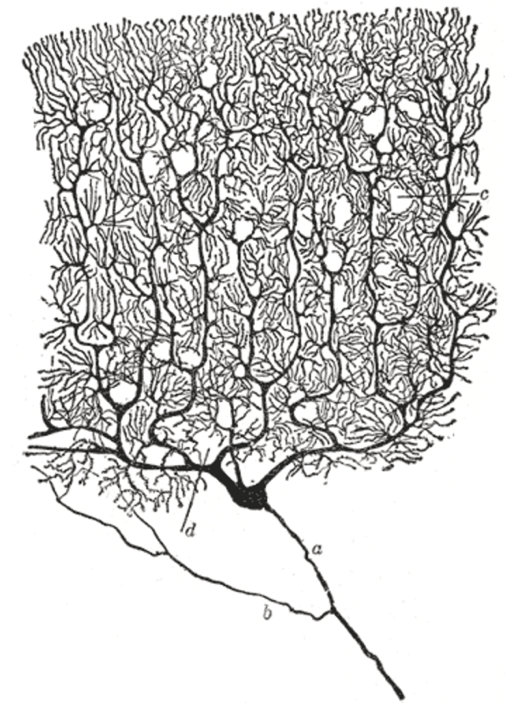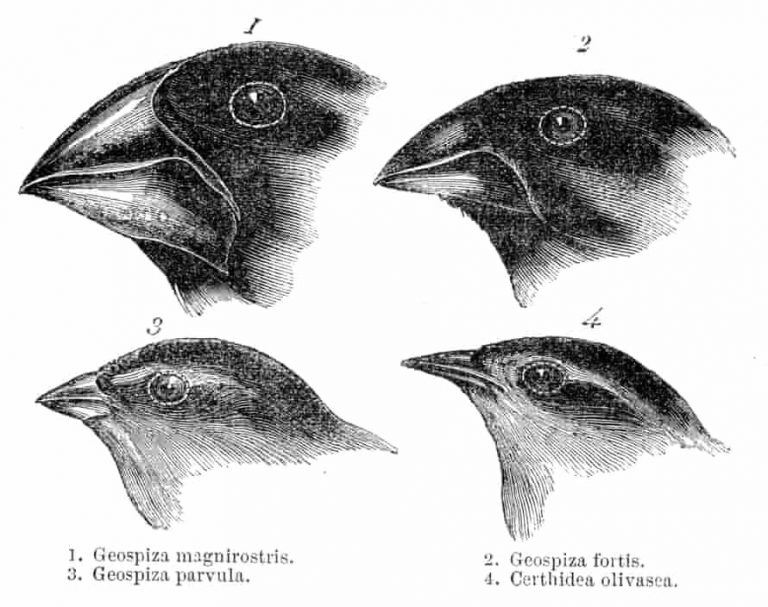
 Written by Maria-Elizabeth Baeva, MSc, Jefferies Lab alum (left)
Written by Maria-Elizabeth Baeva, MSc, Jefferies Lab alum (left)
Edited by Sarah Bowers, PhD Student, Brown Lab at BC Children’s Hospital Research Institute (right)
This is the first blog in a two-part series about the relationship between arts and science, and why the two fields need each other. Read the second blog in the series, “The Tensegrity of Art and Science (Part 2): Why Art Needs Science”.
I earned the nickname “Arts” during my first day of classes as a member of the Faculty of Science at the University of British Columbia. When asked why we chose to go into sciences I explained that my best subject in high school was actually English literature and that my scientific inspirations include the authors John Donne and Victor Hugo 1, 2. To some, this answer may seem paradoxical. A science major might consider the arts to be intangible or abstract, whereas an art major might argue that the sciences are boring or uninspiring. Despite this tension, I believe these two disciplines share commonalities, and most importantly, are reliant on each other.
In this two-part series, I will explore the codependent relationship between the arts and sciences. To begin, I will give a broad overview of both. In the present piece I will then discuss why science needs art, while in the second installment I will describe why art needs science.
How do we define art and science?
Science can be described as a systematic enterprise that builds knowledge through observation and testing hypotheses. Interestingly, the idea of science as we know it today (i.e. research using the scientific method) is a relatively modern phenomenon that began in the 17th century 3. Before this, the sciences were mainly composed of individual fields, such as astronomy, medicine, or mathematics, and were not seen as disciplines that fall under one umbrella with a standardized procedure for study 4. Art on the other hand is as old as humanity itself. Evidence of artistic expression, including jewelry, cave paintings, and pottery dates back to the late Palaeolithic era (~40,000 BCE) 5. Today the arts include the visual arts, literature, and the performing arts.
Both art and science require thoughtful observation and analysis of the world around us. They build knowledge, push boundaries and empower our society. Generally, these are positive aspects, but art and science can and have been used for darker purposes, including propaganda, misrepresenting the truth or justifying inequality. Regardless of the intent or outcome of the work, it is clear that both art and science have a major influence on our society.
Why does science need art?

Ink and pencil drawing of a Purkinje cell in the cat’s cerebellar cortex by Santiago Ramón y Cajal. Image from Wikimedia Commons.
Art is a critical tool for communication. Historically, we can look at the intricate and informative drawings of Santiago Ramón y Cajal, a neuroscientist who drew thousands of brain cells before the invention of microscopic photography 6,7. Even earlier, Charles Darwin’s journals were filled with drawings of various animals, including the famous Galápagos finches with their distinct beaks, which Darwin used to support his theory of evolution and natural selection 8, 9. Present-day examples include clean and crisp diagrams in a Nature or Cell paper that deconvolute a pathway or mechanism, allowing the reader to better understand secretion systems or an immunological response to a virus. Or, a David Attenborough documentary that enthralls the viewer about the biology of snow leopards through careful use of story-telling, orchestral music and beautiful camera work 10, 11.
On a more abstract basis, I believe that an appreciation for the arts makes you a more ethical, moral and empathetic scientist. That is not to say that to develop compassion you must look at Pablo Picasso’s Guernica or read Erich Maria Remarque’s All Quiet on the Western Front 12, 13, 14, 15. However, the arts are about exposing and connecting us to our humanity which is critical in protecting against the use of “objective” scientific arguments to incite discrimination. For example, phrenology and eugenics were unfortunately considered credible theories based on solid research and unbiased reality 16, 17. When we dispute something immoral, we can’t always point to a scientific study decrying it so. Instead, we rely on our ability to understand the views of others, which may be enhanced by an appreciation of art as a means of communication.
The arts also provide an avenue for self-expression from which scientists can benefit. An interesting study noted that Nobel laureates were more likely to pursue a form of artistic expression than other non-laureate researchers in their cohort 18. Another example is the Bard movement in the U.S.S.R. from the 1950s to the 1980s 19. During a post-war time of famine, poverty, civic unrest, corruption, and suppression, some of the biggest underground musicians were scientists and academics. The likes of Sergey Nikitin, Tatyana Nikitina, Alexander Gorodnitsky and Alexander Rosenbaum used simple acoustic guitars and circulated mixtapes to produce music 20, 21, 22, 23. Science and research rely on institutions. In the absence of support from political and bureaucratic establishments, these individuals coped by finding fulfillment through art.
How have the arts influenced science?
There are many famous examples of works of art inspiring scientific investigation. For centuries the phenomenon of the Lycurgus cup, a 4th-century work of Roman glass art which appears green or red depending on the direction from which light shines on it, led scientists to explore its seemingly magical property 24. Eventually, the mystery was solved – nanoparticles of gold and silver come together in a colloidal mixture to create the distinct colors. Another example is the influence of the play Oedipus Rex by Sophocles on Sigmund Freud, who would go on to coin the term “the Oedipus Complex” 25, 26, 27, 28. While most of Freud’s work is now considered passé and controversial, it is a reminder that scientific inspiration need not only come from a beaker, a non-fiction article, or an observation of a natural phenomenon.
Researchers often seem embarrassed or shy to admit when a work of art inspired an idea or hypothesis, yet we know that art profoundly affects society’s perception of the sciences. How many people were inspired to become paleontologists after watching Jurassic Park 29? The film had such an impact on the field, including increased investments into research and technology, that it inspired the term “Jurassic Park Effect 30”. Regardless of the accuracy of movies depicting scientific disciplines, they play key roles in humanizing research and getting people excited about the process of discovery. Perhaps the next cure to a fatal disease will come from a child inspired by a movie about a scientist played by Idris Elba or Sofia Vergara 31, 32.

Four Galápagos finches drawn by Charles Darwin, illustrating variation of their beak sizes. Such records of Darwin’s observations were used to support his theory of evolution and natural selection. Image credit: Ann Ronan Pictures/Print Collector/Getty Images.
Blurring the line
Albert Einstein, who was also a proficient violinist, once famously said, “Music has no effect on my research work, but both are born of the same source and complement each other through the satisfaction they bestow 33.” Who am I to debate one of the greatest scientists of all time? But, when you read this final paragraph from Darwin’s On the Origin of Species, can you really separate the influence of art from science 34?
“Thus, from the war of nature, from famine and death, the most exalted object which we are capable of conceiving, namely, the production of the higher animals, directly follows. There is grandeur in this view of life, with its several powers, having been originally breathed into a few forms or into one; and that, whilst this planet has gone cycling on according to the fixed law of gravity, from so simple a beginning endless forms most beautiful and most wonderful have been, and are being, evolved.”
— Charles Darwin, On the Origin of Species (1859)
- Read the second blog in the series, “The Tensegrity of Art and Science (Part 2): Why Art Needs Science”.
Sources
1 “John Donne” Wikipedia, Wikimedia Foundation, 17 June 2021, https://en.wikipedia.org/wiki/John_Donne
2 “Victor Hugo” Wikipedia, Wikimedia Foundation, 16 June 2021, https://en.wikipedia.org/wiki/Victor_Hugo
3 “Scientific method” Wikipedia, Wikimedia Foundation, 5 June 2021, https://en.wikipedia.org/wiki/Scientific_method
4 “From the discovery of metals up to mapping the human genome, take a quick crash through the development of scientific knowledge.” Open, OpenLearn, 30 August 2019, https://www.open.edu/openlearn/history-the-arts/history/history-science-technology-and-medicine/history-science/brief-history-science
5 Braund, M., Reiss, M.J. The ‘Great Divide’: How the Arts Contribute to Science and Science Education. Can. J. Sci. Math. Techn. Educ.19, 219–236 (2019). https://doi.org/10.1007/s42330-019-00057-7
6 “Santiago Ramón y Cajal” Wikipedia, Wikimedia Foundation, 12 June 2021, https://en.wikipedia.org/wiki/Santiago_Ram%C3%B3n_y_Cajal
7 Martinez-Conde, Susana “Santiago Ramón y Cajal, the Young Artist Who Grew Up to Invent Neuroscience” Scientific American, 30 March 2018, https://blogs.scientificamerican.com/illusion-chasers/santiago-ramon-y-cajal-the-young-artist-who-grew-up-to-invent-neuroscience/
8 “Charles Darwin” Wikipedia, Wikimedia Foundation, 18 June 2021, https://en.wikipedia.org/wiki/Charles_Darwin
9 Scoville, Heather “Charles Darwin’s Finches” ThoughtCo, 26 June 2019, https://www.thoughtco.com/charles-darwins-finches-1224472
10 “David Attenborough” Wikipedia, Wikimedia Foundation, 13 June 2021, https://en.wikipedia.org/wiki/David_Attenborough
11 “Snow Leopard Hunting | Planet Earth | BBC Earth” YouTube, BBC Earth, 12 March 2017, https://www.youtube.com/watch?app=desktop&v=Uj0EVT-Ekog
12 “Pablo Picasso” Wikipedia, Wikimedia Foundation, 17 June 2021, https://en.wikipedia.org/wiki/Pablo_Picasso
13 “Guernica, 1937 by Pablo Picasso”, PabloPicasso.org, Accessed June 18 2021, https://www.pablopicasso.org/guernica.jsp
14 “Erich Maria Remarque” Wikipedia, Wikimedia Foundation, 8 May 2021, https://en.wikipedia.org/wiki/Erich_Maria_Remarque
15 “All Quiet on the Western Front” Wikipedia, Wikimedia Foundation, 15 June 2021, https://en.wikipedia.org/wiki/All_Quiet_on_the_Western_Front
16 Samuel H. Greenblatt, M.D., Phrenology in the Science and Culture of the 19th Century, Neurosurgery, Volume 37, Issue 4, October 1995, Pages 790–805, https://doi.org/10.1227/00006123-199510000-00025
17 Norrgard, K. (2008) Human testing, the eugenics movement, and IRBs. Nature Education 1(1):170
18 Root-Bernstein, R., Allen, L., Beach, L., Bhadula, R., Fast, J., Hosey, C., Kremkow, B., Lapp, J., Lonc, K., Pawelec, K., Podufaly, A., Russ, C., Tennant, L., Vrtis, E., & Weinlander, S. (2008). Arts foster scientific success: Avocations of Nobel, National Academy, Royal Society, and Sigma Xi members. Journal of Psychology of Science and Technology, 1(2), 51–63. https://doi.org/10.1891/1939-7054.1.2.51
19 “Bard (Soviet Union)” Wikipedia, Wikimedia Foundation, 30 May 2021, https://en.wikipedia.org/wiki/Bard_(Soviet_Union)
20 “Sergey Nikitin (musician)” Wikipedia, Wikimedia Foundation, 21 May 2021, https://en.wikipedia.org/wiki/Sergey_Nikitin_(musician)
21 “Tatyana Nikitina” Wikipedia, Wikimedia Foundation, 27 May 2021, https://en.wikipedia.org/wiki/Tatyana_Nikitina
22 “Alexander Gorodnitsky” Wikipedia, Wikimedia Foundation, 22 April 2021, https://en.wikipedia.org/wiki/Alexander_Gorodnitsky
23 “Alexander Rosenbaum” Wikipedia, Wikimedia Foundation, 4 May 2021, https://en.wikipedia.org/wiki/Alexander_Rosenbaum
24 Merali, Zeeya “This 1,600-Year-Old Goblet Shows that the Romans Were Nanotechnology Pioneers” Smithsonian Magazine, September 2013, https://www.smithsonianmag.com/history/this-1600-year-old-goblet-shows-that-the-romans-were-nanotechnology-pioneers-787224/
25 “Play Summary Oedipus the King” Cliffnotes, Accessed June 19 2021, https://www.cliffsnotes.com/literature/o/the-oedipus-trilogy/play-summary/oedipus-the-king
26 Woodard, Thomas M. and Taplin, Oliver. “Sophocles”. Encyclopedia Britannica, 29 Jan. 2021, https://www.britannica.com/biography/Sophocles. Accessed 19 June 2021.
27 “Sigmund Freud” Wikipedia, Wikimedia Foundation, 19 June 2021, https://en.wikipedia.org/wiki/Sigmund_Freud
28 McLeod, S. A. “Oedipal complex” Simply Psychology, 3 September 2018, https://www.simplypsychology.org/oedipal-complex.html
29 “Jurassic Park Official Trailer #1” YouTube, Movieclips Classic Trailers, 12 December 2011, https://www.youtube.com/watch?app=desktop&v=QWBKEmWWL38
30 Zoledziowski, Anya & Cummings, Madeleine “The ‘Jurassic Park effect’: How a generation fell in love with dinosaurs”, CBC News Edmonton, 29 August 2019, https://www.cbc.ca/news/canada/edmonton/jurassic-park-effect-alberta-1.5264341
31 “Idris Elba” Wikipedia, Wikimedia Foundation, 18 June 2021, https://en.wikipedia.org/wiki/Idris_Elba
32 “Sofía Vergara” Wikipedia, Wikimedia Foundation, 11 June 2021, https://en.wikipedia.org/wiki/Sof%C3%ADa_Vergara
33 “Albert Einstein” Wikipedia, Wikimedia Foundation, 17 June 2021, https://en.wikipedia.org/wiki/Albert_Einstein
34 Darwin, Charles “The Project Gutenberg eBook of On the Origin of Species”, Project Gutenberg, 26 October 2020, https://www.gutenberg.org/files/1228/1228-h/1228-h.htm


